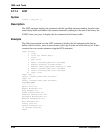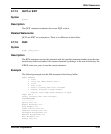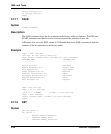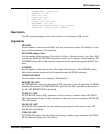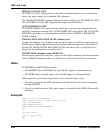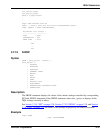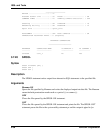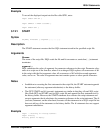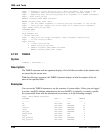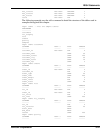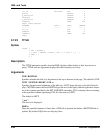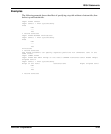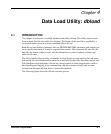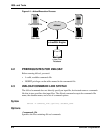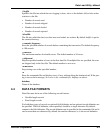
ISQL and Tools
3-40 FairCom Corporation
ISQL> -- Display a script file with the ! shell statement. The script's SQL
ISQL> -- statement uses the LIKE predicate to retrieve customer names
ISQL> -- beginning with the string passed as an argument in a START statement:
ISQL> ! more start_ex.sql
SELECT customer_name FROM customers
WHERE customer_name LIKE '&1%';
ISQL> -- Use the START statement to execute the SQL statement in the script
ISQL> -- start_ex.sql. Supply the value 'Ship' as a substitution argument:
ISQL> START start_ex.sql Ship
CUSTOMER_NAME
-------------
Ship Shapers Inc.
1 record selected
ISQL> -- ISQL puts the script statement, after argument substitution,
ISQL> -- in the history buffer:
ISQL> history
1 ! more start_ex.sql
3 START start_ex.sql Ship
4 SELECT customer_name FROM customers
WHERE customer_name LIKE 'Ship%'
3.7.22 TABLE
Syntax
T[ABLE] [ tablename ] ;
Description
The TABLE statement with no argument displays a list of all the user tables in the database that
are owned by the current user.
With the tablename argument, the TABLE statement displays a brief description of the col-
umns in the specified table.
Examples
You can use the TABLE statement to see the structure of system tables. Unless you are logged
in as the c-treeSQL database administrator (the user ADMIN, by default), you need to qualify
the system table name with the administrator user name, as in the following example:
ISQL> table ADMIN.systables
COLNAME NULL ? TYPE LENGTH
------- ------ ---- ------
id NOT NULL INT 4
tbl NOT NULL VARCHAR 32
creator NOT NULL VARCHAR 32
owner NOT NULL VARCHAR 32
tbltype NOT NULL VARCHAR 1
tblpctfree NOT NULL INT 4
segid NOT NULL INT 4
has_pcnstrs NOT NULL VARCHAR 1
has_fcnstrs NOT NULL VARCHAR 1



